Our
backyard may seem inconsequential as wildlife habit considering
where we live. Surrounded by National Parks and Forests consisting
of hundreds of thousands of acres of wildlands, these vast
tracts provide habitat for a variety of creatures great and
small. A mule deer wouldn’t last a minute in my backyard;
but then again they are not our targeted species. No, our
little backyard is for birds and bugs, wildlife that can
exist within this small, urban space.
With birds, butterflies and bugs in mind, we plant our garden or hang
our feeders to entice these wild creatures to visit. Purple coneflower,
coreopsis, white chrysanthemum, sunflowers, and zinnias do double time
as showy flowers and pollinator lures. Providing seasonal color and cut
flowers for inside, we enjoy the fragrance and form of these flowers.
Mixed in with native wildflowers – bee plant, evening primrose,
penstemons, and columbines, these flowers offer habitat for ants, sphinx
moths, caterpillars, lady bird beetles, aphids, and hummingbirds, to
name but a few of our regulars. Every spring I watch in amazement as
aphids attack our lone peach and apricot trees, only to be repelled in
a short time by a proliferation of lady bug larvae. These tiny carnivores
seem to appear magically, and clear up the aphid infestation on their
own.
Mixed into this menagerie are host plants for butterflies and moths – grasses
and herbs. Some years we get an abundance of mourning cloak caterpillars
on the hackberry limbs that overhang into our yard. Though the larvae
devour some leaves, they tend to have a minimal impact on the tree’s
health.
My numerous attempts to establish milkweed plants in the yard have not
succeeded, but that doesn’t mean I’ve given up. Many consider
common milkweed to be a nuisance plant, but not me. If I’m lucky
to get them established, then I have a chance of observing a Monarch
butterfly’s cycle of egg laying, caterpillar, chrysalis, and adult
emergence all on one plant. Trouble is, I haven’t been that lucky,
at least as far as growing the plants. Without the milkweed, the monarchs
go elsewhere.
Tiger swallowtail course through our yard, stopping to sip nectar at
the various floral cafes. These big beauties seem to float more than
they flutter as they cruise our yard; hence, we have nicknamed them “flutterbys”.
These “winged wonders” have little to fear from the birds
that inhabit our yard. I have not observed on predation by birds upon
these butterflies, but I can’t say the same for the birds.
Most of the avian predation encounters have started from somewhere else – across
the street, the house next door, maybe from down the street. As if the
chase is not scary enough, the prey has to avoid school buses and the
mailman, fiery-eyed cats that lust for feathers, and immovable objects
like houses and windows.
I’ve come to identify the sound of a dull thud against our window
as the POI – point of impact. I can not understand how these birds
do not see our dirty windows, but they must have a view that connects
front windows with back ones, thus seeming like a perfect escape route.
Trouble is they don’t understand there is a whole house in between.
Sometimes the predator stops, curious as to why its prey has given up
the chase. Other times it too has a failure with the aerial brakes and
crashes into the windowpane. One time, I observed a magpie swoop down
and grab the dazed and confused prey in a moment of opportunity.
For the most part, birds can forage at our feeders in relative peace.
Of course, there is the instantaneous scattering of finches, sparrows
and siskins, which often indicates a nearby predator. The precautionary
exodus is caused more by dogs, kids, vehicles on 100 North, or a multitude
of other reasons that spook these birds, than on predators.
Because of our efforts to landscape our yard, we enjoy the benefits of
seasonal color, as well as provided some habitat for others. Taking a
cue from the movie Field of Dreams, we have built it and they do come. |
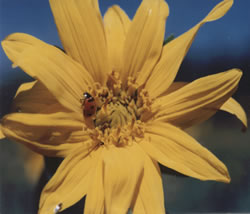
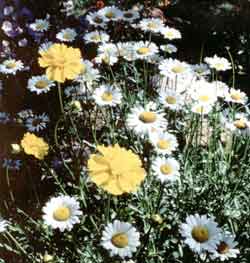
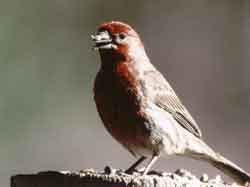
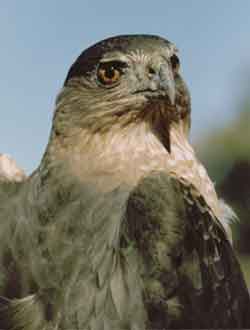
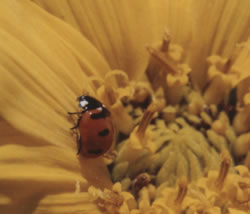
|





